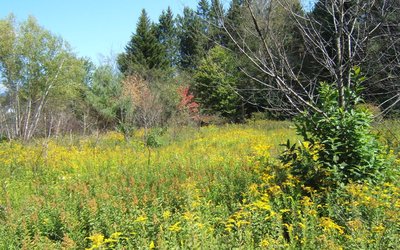Climate change will affect biodiversity, regardless of the Paris Agreement
August 7, 2019

Photo: EionaR. (www.flickr.com)
Terrestrial biodiversity will respond to climate change. This response has been quantified by analysing a selection of 97 studies published between 1992 and 2015. These studies reported climate change effects on contemporary ecosystems and different taxonomic groups (plants, vertebrates, birds, mammals, herptiles, insects) around the world.
From these 97 studies, the proportion of terrestrial biodiversity that remained at different levels of global warming was estimated. This proportion was expressed in two metrics: (1) the fraction of remaining (i.e., persisting) species at a location, and (2) the fraction of remaining area with a suitable climate for a certain species. Both metrics indicate a deviation from the original biodiversity state and indicate biodiversity intactness.
Remaining species
According to this analysis, the fraction of remaining species at a location will reduce to 86% on average when global warming reaches 2 °C above the pre-industrial level. This implies that under a global mean temperature increase of up to 2 °C, terrestrial ecosystems could lose on average 14% of their current local species. A further global warming up to 3 °C and 4 °C will lead to a reduction of remaining species up to 83% and 78% on average, respectively.
Remaining suitable area
Likewise, the fraction of remaining area with a suitable climate for a certain species will reduce to 65% at 2 °C global warming, and to 50% and 46% at 3 °C and 4 °C global warming, respectively.
Averaged numbers
These are averaged numbers for all terrestrial biodiversity. The impacts vary among taxonomic groups. For instance, the fraction of remaining species at a location at 2 °C global warming is 82% for plant species and 90% for vertebrate species. The study indicates that deserts, temperate forests, shrublands, and tropical and boreal forests are the most sensitive biomes to increasing global temperatures.
Indicative of projected decreases
These results indicate that many species will disappear from areas where they now occur. However, this does not automatically mean that total species richness will decrease as new species can potentially expand their ranges and establish, depending on their ability to disperse. In this analysis, it was assumed that species are unable to disperse or adapt. This is a conservative assumption, but probably not that conservative: on average, no dispersal is close to reality for most species. Thus, according to the authors, the metrics used in their analysis are a good indication of projected decreases of terrestrial biodiversity.
Source: Nunez et al., 2019. Climatic Change 154: 351-365.








